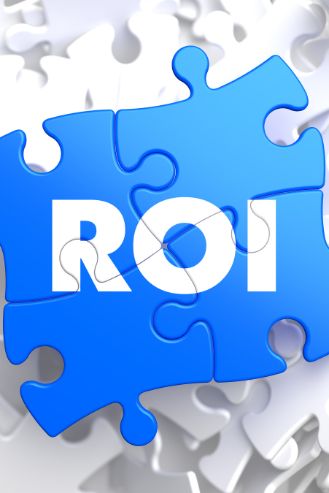
Measuring Marketing ROI Through Data: A Comprehensive Guide
Measuring marketing ROI through data analysis has become essential for businesses seeking to optimize their marketing spend and demonstrate the value of their campaigns. In today’s data-rich environment, marketers have unprecedented access to metrics and analytics that can reveal the true impact of their efforts on business outcomes. However, many organizations struggle to implement effective ROI measurement frameworks that accurately capture the complex, multi-channel nature of modern marketing initiatives.

Why Marketing ROI Measurement Matters
The ability to accurately measure return on investment is no longer optional for marketing departments. With marketing ROI analysis, teams can justify budgets, optimize spending, and earn a strategic seat at the executive table. Research shows that companies with advanced marketing measurement capabilities are 1.7 times more likely to outperform their competitors in revenue growth and profitability.
Marketing ROI measurement provides several critical benefits:
- Budget justification: Demonstrating the financial impact of marketing activities
- Resource allocation: Identifying which channels and campaigns deliver the highest returns
- Campaign optimization: Providing data to refine targeting, messaging, and creative elements
- Strategic planning: Informing future marketing investments based on historical performance
- Executive alignment: Communicating marketing value in financial terms that resonate with leadership
The Fundamentals of Marketing ROI Calculation
Basic ROI Formula
At its simplest, marketing ROI is calculated using this formula:
For example, if you spend $10,000 on a campaign that generates $50,000 in revenue:
This means for every dollar spent on marketing, the company generated $4 in profit (after accounting for marketing costs).
Advanced ROI Considerations
While the basic formula provides a starting point, sophisticated ROI measurement incorporates additional factors:
- Contribution margin: Using profit rather than revenue in calculations
- Customer lifetime value (CLV): Accounting for long-term customer relationships
- Attribution modeling: Distributing credit across multiple marketing touchpoints
- Incrementality: Isolating the true impact of marketing beyond what would have happened anyway
- Time lag effects: Accounting for delayed conversions, especially in B2B contexts
Pro Tip: Segmented ROI Analysis
Calculate ROI at multiple levels to gain deeper insights:
- By channel (social, email, search, etc.)
- By campaign or initiative
- By customer segment
- By product or service line
- By geographic region
This granular approach reveals opportunities that might be hidden in aggregate analysis.
Building a Data-Driven ROI Measurement Framework
Implementing effective marketing ROI measurement requires a structured approach. Follow these steps to build a robust framework:
Step 1: Define Clear Objectives and KPIs
Begin by establishing what success looks like for your marketing efforts:
- Set specific, measurable marketing objectives aligned with business goals
- Define primary KPIs that directly impact revenue (conversions, sales, leads)
- Identify secondary metrics that provide context (engagement, awareness)
- Establish baseline measurements for comparison
- Set realistic targets based on historical performance and industry benchmarks
Step 2: Implement Comprehensive Tracking
Accurate ROI measurement depends on robust data collection:
- Deploy tracking codes across all digital marketing channels
- Implement consistent UTM parameters for campaign tracking
- Set up conversion tracking for all valuable actions
- Integrate CRM data with marketing analytics
- Establish methods for tracking offline conversions
Step 3: Choose Appropriate Attribution Models
Select attribution approaches that reflect your customer journey:
- Last-click attribution: Assigns all credit to the final touchpoint
- First-click attribution: Gives all credit to the initial touchpoint
- Linear attribution: Distributes credit equally across all touchpoints
- Time-decay attribution: Assigns more credit to touchpoints closer to conversion
- Position-based attribution: Gives more weight to first and last interactions
- Data-driven attribution: Uses predictive analytics to assign credit based on actual impact
Step 4: Account for Full Marketing Costs
Ensure your ROI calculations include all relevant expenses:
- Media spend and advertising costs
- Content creation and creative development
- Agency and vendor fees
- Marketing technology platforms
- Staff time and internal resources
- Production and distribution costs
Step 5: Analyze and Visualize ROI Data
Transform raw data into actionable insights:
- Create dashboards that highlight key ROI metrics
- Segment analysis by channel, campaign, and audience
- Identify trends and patterns over time
- Compare performance against benchmarks and targets
- Generate automated reports for stakeholders
| Channel | Investment | Revenue | ROI | CPA |
|---|---|---|---|---|
| Paid Search | $25,000 | $112,500 | 350% | $42 |
| Social Media | $18,000 | $63,000 | 250% | $60 |
| Email Marketing | $7,500 | $45,000 | 500% | $25 |
| Content Marketing | $15,000 | $52,500 | 250% | $75 |
| Total | $65,500 | $273,000 | 317% | $49 |
Advanced Techniques for Marketing ROI Measurement
Multi-Touch Attribution Analysis
Modern customer journeys rarely follow a linear path. Multi-touch attribution addresses this reality by:
- Tracking interactions across the entire customer journey
- Assigning fractional credit to multiple touchpoints
- Using algorithmic models to determine influence weights
- Accounting for both online and offline interactions
- Providing a more holistic view of marketing effectiveness
Incrementality Testing
Incrementality testing helps isolate the true impact of marketing activities:
- Create test and control groups to measure lift
- Conduct geo-based experiments to compare markets
- Use holdout tests to determine baseline conversion rates
- Implement A/B testing at the campaign level
- Measure the incremental impact beyond organic activity
Marketing Mix Modeling (MMM)
For a comprehensive view of marketing effectiveness:
- Analyze historical data to identify patterns and correlations
- Account for external factors like seasonality and competition
- Model the relationship between marketing inputs and business outcomes
- Optimize budget allocation across channels
- Forecast expected returns from future investments
Customer Lifetime Value Analysis
Incorporate long-term customer value into ROI calculations:
- Calculate average customer lifespan
- Determine average purchase frequency and value
- Account for retention rates and churn
- Include cross-selling and upselling potential
- Compare acquisition costs against lifetime value
Implementation Tip: Start Simple, Then Expand
Begin with basic ROI measurement for your most significant channels, then gradually implement more sophisticated approaches as your capabilities mature. This incremental approach prevents analysis paralysis and delivers immediate value while building toward comprehensive measurement.
Overcoming Common Challenges in Marketing ROI Measurement
Challenge 1: Data Silos and Integration Issues
Solution: Implement a customer data platform (CDP) or data warehouse that centralizes information from multiple sources. Create consistent identifiers across systems and establish automated data pipelines to ensure information flows seamlessly between platforms.
Challenge 2: Attribution Complexity
Solution: Adopt a multi-model approach that compares different attribution methods side by side. This provides a range of perspectives rather than relying on a single model. Gradually move toward data-driven attribution as your measurement sophistication increases.
Challenge 3: Offline Conversion Tracking
Solution: Implement call tracking, unique promo codes, post-purchase surveys, and CRM integration to connect offline conversions to online marketing activities. Consider using advanced tracking tools that bridge the online-offline gap through methods like location analytics.
Challenge 4: Long Sales Cycles
Solution: Develop interim metrics that indicate progress toward conversion, such as MQLs, SQLs, and opportunity creation. Use time-based cohort analysis to track how marketing activities influence pipeline development over extended periods.
Challenge 5: Organizational Alignment
Solution: Create cross-functional measurement teams that include marketing, sales, finance, and analytics stakeholders. Develop shared definitions of success and establish regular review processes to ensure alignment on ROI methodology and interpretation.
Future Trends in Marketing ROI Measurement
The field of marketing measurement continues to evolve rapidly. Here are key trends to watch:
AI and Machine Learning
Artificial intelligence is transforming ROI measurement through:
- Automated anomaly detection in performance data
- Predictive modeling of expected campaign outcomes
- Advanced attribution algorithms that process complex signals
- Natural language processing for unstructured feedback analysis
- Automated budget optimization based on real-time performance
Privacy-First Measurement
As third-party cookies disappear and privacy regulations tighten:
- First-party data strategies will become essential
- Modeled conversions will supplement direct measurement
- Aggregated data approaches will replace individual tracking
- Consent-based measurement frameworks will emerge
- Contextual targeting will see renewed importance
Unified Measurement Approaches
The future lies in combining multiple measurement methodologies:
- Integration of attribution and marketing mix modeling
- Holistic frameworks that span digital and traditional channels
- Real-time and long-term measurement in unified dashboards
- Brand and performance metrics in combined analyses
- Customer experience metrics incorporated into ROI calculations
Conclusion: The Path to ROI Measurement Maturity
Measuring marketing ROI through data is not a one-time project but an ongoing journey of increasing sophistication and accuracy. Organizations that commit to developing robust measurement capabilities gain a significant competitive advantage through more efficient spending, better campaign performance, and stronger alignment between marketing activities and business outcomes.
The most successful companies approach ROI measurement as both a technical and organizational challenge, investing in the right tools while also building the processes and culture needed to act on measurement insights. By following the framework outlined in this guide and continuously refining your approach, you can transform marketing ROI measurement from a reporting exercise into a strategic capability that drives business growth.
Remember that perfect measurement is an aspirational goal rather than an immediate destination. Focus on making incremental improvements that deliver actionable insights, and prioritize accuracy and consistency over complexity. With each step forward in your measurement journey, you’ll gain greater confidence in marketing’s contribution to business success and unlock new opportunities for optimization and growth.


